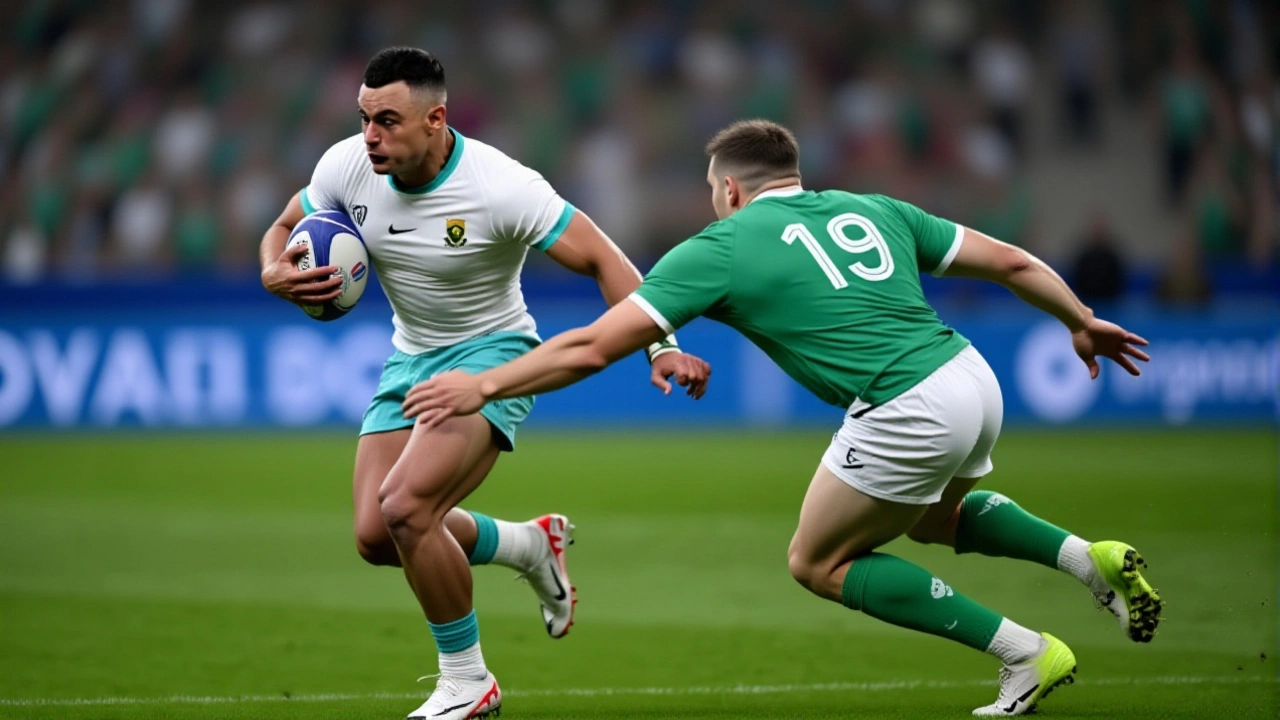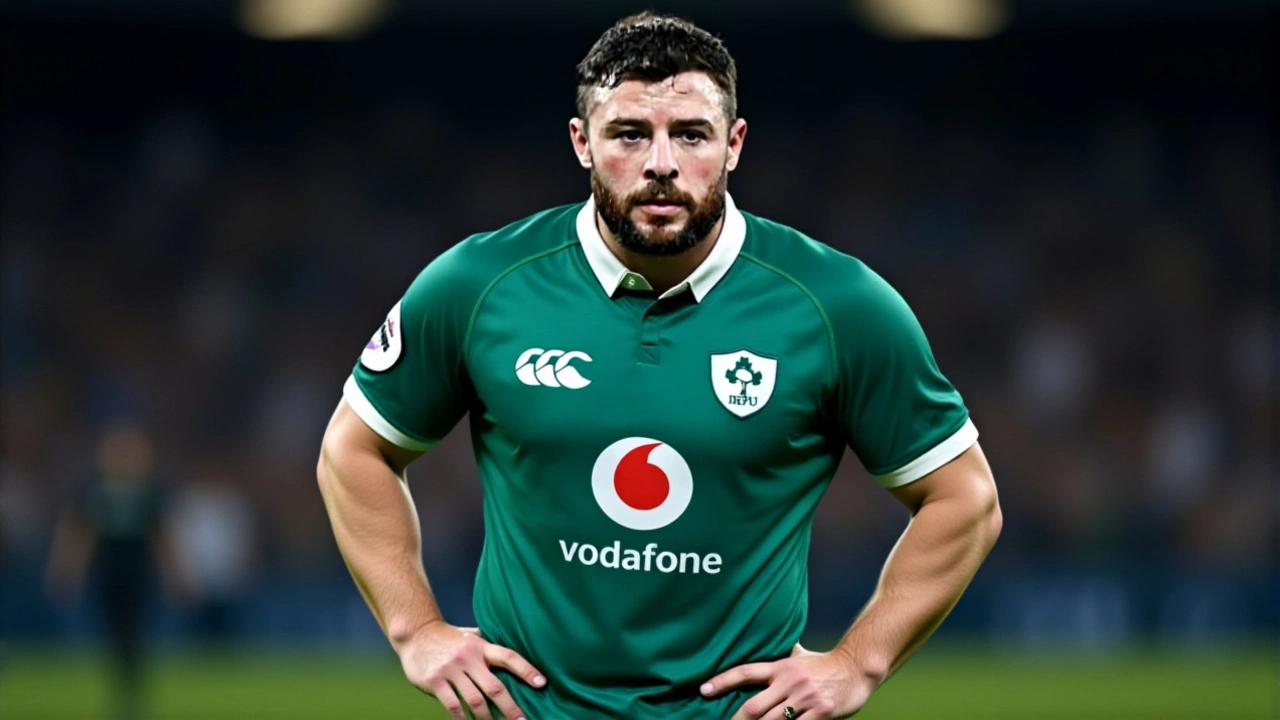When the final whistle blew at Aviva Stadium on November 22, 2025, the South African Rugby Union finally exhaled. After 13 years of frustration, the Springboks beat Ireland 24-13 in Dublin — their first victory there since 2012. And it wasn’t just a win. It was a war. A brutal, chaotic, card-filled war that left Ireland down to 12 men by halftime and the rugby world stunned. The Quilter Nations SeriesDublin had promised drama. It delivered more than anyone expected.
The Cards That Changed Everything
By the 35th minute, Ireland had seen five cards: one red, four yellow. Lock James Ryan was sent off for a dangerous high tackle — a decision that sparked fury from the home crowd. Then came the cascade. Prop Tadhg Furlong was yellow-carded for a collapsed scrum. Fly-half Sam Prendergast, who started over Jack Crowley for the second straight match, was sin-binned after a reckless offside penalty. Then, within 90 seconds, two more Irish players — Will Connors and Andrew Porter — received yellows for repeated infringements. The Irish Rugby Football Union later confirmed it was the most cards ever shown to Ireland in a single Test. The result? Ireland spent 32 minutes with 12 men. And still, they held on.
"It was madness," said Rassie Erasmus, head coach of the Springboks. "I’ve seen tough games. But this? Five cards? You don’t plan for that. You just survive."
Scrum Dominance and Tactical Precision
While Ireland’s discipline unraveled, South Africa’s engine roared. Their scrum — long a hallmark of their dominance — was described by The Telegraph as "utterly dominant." The Springboks won seven of eight scrum penalties, feeding a relentless maul that wore down Ireland’s battered defensive line. Fly-half Makazole Mapimpi and fullback Damian Willemse exploited gaps with surgical precision, while flanker Siya Kolisi led the tackle count with 21 — including five in the Irish 22-meter zone.
At halftime, South Africa led 19-7. The scoreboard didn’t tell the full story. Ireland’s defense was holding on by threadbare threads. When Josh van der Flier intercepted a loose pass and sprinted 40 meters to score in the 41st minute, it felt like a lifeline. But the Springboks responded with a try from Cheslin Kolbe — a sidestep so sharp it left three defenders grasping air. "They sliced through us like a scalpel," said one Irish analyst on Sky Sports’ live feed. "We had no answers."

"A Bruising Defeat" — Ireland’s Reaction
On the Irish side, the silence after the final whistle was louder than any roar. Captain Caelan Doris, who played 79 minutes with a shoulder injury, said: "We didn’t lose because we weren’t good enough. We lost because we couldn’t stay on the field." The Irish Rugby Football Union called the match "bruising" in its official report, while head coach Andy Farrell admitted the disciplinary record was "unacceptable."
"We can’t afford to give away five cards against a team like South Africa," Farrell told reporters. "They’re not going to give you second chances. We made it too easy for them."
Even more troubling for Ireland: their core structure is now under scrutiny. Prendergast, 23, was criticized for poor decision-making under pressure. Veteran hooker John Cooney was substituted at 58 minutes — a sign the coaching staff had lost faith in the halfback pairing. "This isn’t just about cards," said former Ireland captain Brian O’Driscoll on BBC Radio 5 Live. "It’s about composure. When you’re down to 12, you need ice in your veins. We had none."
Breaking the Dublin Hoodoo
For South Africa, this win carried emotional weight far beyond points. Since 2012, they’d lost four straight Tests in Dublin. Fans called it the "Dublin hoodoo." Coaches whispered about curses. Even the Springboks’ own media called it "the monkey on our backs."
"We’ve been close," said Erasmus. "We’ve lost by three points. By one. But tonight? We got over the line. And you know what? The beer tastes a little better."
It wasn’t just about breaking a streak. It was about proving they could win under pressure — not just physical, but psychological. The Springboks had been outscored 117-92 in their last five Tests against Ireland. Yet here, in the most hostile environment in northern hemisphere rugby, they held firm. Even with Ireland’s last-ditch effort in the 78th minute — a try-saving tackle by Grainne Smith on Cheslin Kolbe — South Africa refused to buckle.

What’s Next? The Ripple Effects
The fallout is already spreading. World Rugby has launched a review into the disciplinary pattern of the match. Was the referee too lenient early on? Did the TMO miss clear foul play? Meanwhile, Ireland’s selectors face pressure to reconsider their fly-half hierarchy. Jack Crowley, who sat on the bench, is now being touted as a potential starter for the Six Nations.
For South Africa, the focus shifts to the upcoming match against New Zealand in Cape Town — a Test that could determine who leads the World Rugby rankings into the 2027 World Cup. Erasmus, ever the pragmatist, downplayed the significance: "We’re still two games behind them in the head-to-head. This win doesn’t change that."
But in South Africa, it changes everything. For the first time in over a decade, they’ve conquered Dublin. And now, they believe they can conquer anyone.
Frequently Asked Questions
Why was this match so controversial?
The match became infamous for Ireland receiving five disciplinary cards — one red and four yellow — reducing them to 12 players for over 30 minutes. The frequency and timing of the cards, especially the back-to-back yellows in the 30th minute, sparked debate over referee consistency and whether Ireland’s physical style was unfairly penalized. World Rugby has since initiated a post-match review into the officiating.
How did South Africa manage to win despite Ireland’s strong defense?
South Africa’s scrum dominance was the key. They won 7 out of 8 scrum penalties, creating sustained pressure and field position. Their backline, led by Kolbe and Mapimpi, capitalized on Ireland’s reduced numbers with sharp, low-risk attacks. Even when Ireland held firm defensively, the Springboks’ relentless forward play drained their energy — a classic case of attrition winning over brilliance.
What does this mean for Ireland’s Six Nations chances?
The defeat raises serious questions about Ireland’s discipline and decision-making under pressure. With key players like James Ryan and Tadhg Furlong now facing potential suspensions, their front row depth is under strain. If they can’t fix their penalty count and improve composure in tight games, their Grand Slam hopes in the 2026 Six Nations could be in jeopardy.
Is this win a sign South Africa is back as the world’s best team?
It’s a strong signal. Ranked #1 by World Rugby, the Springboks have now won 11 of their last 12 Tests. This win in Dublin — under extreme adversity — proves they can win away from home against elite opposition. But they still trail New Zealand in head-to-head wins since 2022. This victory doesn’t crown them champions — but it re-establishes them as the team others fear most.
Who were the standout players for South Africa?
Flanker Siya Kolisi led with 21 tackles and two turnovers. Cheslin Kolbe scored the decisive try with a breathtaking sidestep, while prop Ox Nché dominated the scrum with 90% success rate on put-ins. Fly-half Makazole Mapimpi was quietly brilliant, kicking 4/4 for 12 points and directing the attack with calm authority — a rare trait in high-pressure away games.
What’s next for the Springboks and Ireland?
South Africa faces New Zealand in Cape Town on December 6, 2025 — a potential World Cup final preview. Ireland, meanwhile, will regroup for the 2026 Six Nations, with Jack Crowley likely to start at fly-half. Both teams will be under intense scrutiny as they prepare for the 2027 World Cup in Australia, where this match could be remembered as a turning point.
